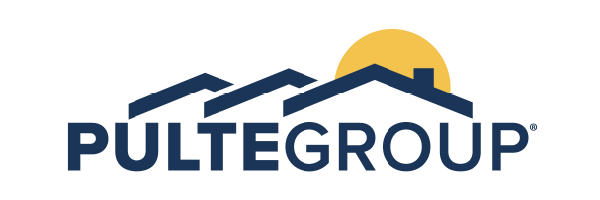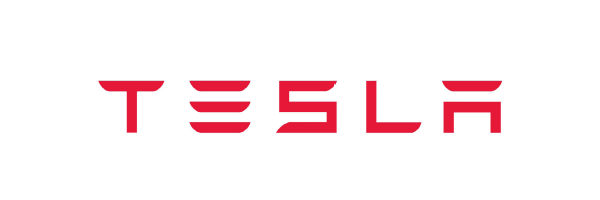In the first nine months of 2023, the S&P 500 advanced 11.68%. But that’s an average, of course. Many stocks returned less. These 10 winning stocks, however—the best performers over the first three quarters of the year—helped push the benchmark higher.
If there is a unifying theme to these outperformers, it’s multipronged. One clear trend is the rise in demand for leisure travel. This drove several stocks that are involved in reservation systems and cruises.
Another crucial trend is outsized enthusiasm for the future and promise of renewable energy, virtual reality, and artificial intelligence. Investors are hoping to get in on the ground floor, or close to it, of the next big thing in technology. This eagerness spurred a number of tech stocks into record territory.
Higher interest rates have been a third key factor.
Altogether, the top 10 stocks year-to-date through September 30 beat the broad market by at least 41 percentage points. The No. 1 stock surpassed it by a whopping 186 percentage points.
Naturally, whether or not they continue to dominate through year-end and beyond remains to be seen.
10. Booking Holdings (BKNG)
The Norwalk, Conn.-based company that helps manage online reservations for hotels, restaurants, rental cars, and other hospitality ventures, is a clear beneficiary of growing demand for travel—and fewer cancellations than in recent years.
For instance, one of its subsidiaries, OpenTable, which serves high-end restaurants, recently collaborated with technology company Popmenu to enhance digital menu capabilities for a variety of restaurants. Market research suggests that the global restaurant-management-software market will reach nearly $5 billion by year-end.
But solid growth in domestic hotel bookings seems to be driving Booking’s growth, according to analysts.
Management projects that quarterly EPS will come in at $67.85, which would be a nearly 28% year-over-year increase. Average analyst estimates anticipate that quarterly revenue will jump nearly 19.5% from the corresponding quarter last year, to $7.23 billion.
Through the end of the third quarter, the stock surged 53% this year.

9. Advanced Micro Devices (AMD)
The a Santa Clara, Calif.-based chipmaker, faces steep competition. One of its chief rivals is Nvidia, which has a $1 trillion market cap.
But backers aren’t too concerned. The market is big and growing. The promise and potential of artificial intelligence has driven the growth of many tech companies, perhaps especially the manufacturers of semiconductor chips, like AMD.
Most recently, AMD announced plans to acquire Nod.ai, a startup company that provides a technology platform for training AI models. It produces what’s called “machine learning” software, and its products are already in use by AMD and others across a variety of services such as graphics processing. This is seen as further confirmation of AMD’s dedication to the emerging frontier of AI.
The average analyst estimate for EPS in the third quarter is $0.68, which is one penny more than in the corresponding period a year ago. Revenue estimates average $5.69 billion for the quarter, up from $5.62 billion a year ago.
In the first three quarters of this year, shares advanced 58.7%.

8. West Pharmaceutical Services (WST)
The Exton, Pa.-based maker of pharmaceutical containment and delivery systems benefits from several trends in healthcare.
The company makes syringes, stoppers and seals for injectable medications and solutions for shipping, delivering and reconstituting other pharmaceuticals. Its market is global.
No doubt it has benefited from the sales expansion of its proprietary products, but it also sells products related to Covid-19 vaccines and treatments. That remains a vigorous market.
In the 12 months ended September 30 its market cap skyrocketed some 55% to just over $28 billion.
The average estimate for EPS in the third quarter is $1.86, which actually represents a year-over-year decline of $0.17. But the average estimate for quarterly revenue is $750.3 million, a jump of nearly $20 million from the corresponding quarter a year ago.
Other factors from its balance sheet are appealing to analysts and investors. For instance, over the past 12 months its operating margin was 22.8%. Fully 22% of its assets are in cash, and it has 1% debt as a percentage of equity.
In the first three quarters of this year, the stock rose 59.4%.

7. PulteGroup (PHM)
The Atlanta-based company is a homebuilder headquartered in Atlanta. It also has a number of related businesses. It offers home designs for houses, condos, duplexes, and other domiciles. It acquires and develops land on which it constructs housing. Its brand names include Centex, Del Webb, DiVosta Homes, American West, and John Wieland Homes.
EPS is expected to grow 5% year-over-year for the current quarter, to $2.83, on revenue of $4.02 billion. Over the last year, driven by high demand, revenue grew some 14% to nearly $17 billion, and over the past three years its annual EPS growth was 43%.
Pulte is a beneficiary of several trends, analysts say. Chief among them may be mortgage rate hikes. With mortgage rates rising, many homeowners with mortgages at lower rates are unwilling to sell. They don’t want to trade in their current low-rate mortgages for new higher ones. Consequently, the supply of existing homes is tight. Consumers who are looking to buy must instead consider new home developments—the type that Pulte specializes in.
Its shares leapt 62.6% in the first nine months of this year.

6. General Electric (GE)
GE has been around for more than a century, but some analysts say it’s never been more relevant. Based in Boston, it’s a multinational industrial giant that provides gas and steam turbines and power-generation software tools. It’s also involved in renewable energy, making devices for wind and hydro power plants.
Besides its involvement in energy, GE has a dominant aerospace division that supplies engines to Boeing and Airbus.
All divisions have been operating efficiently and profitably, analysts say.
Fueling some excitement about the company is the announcement that it plans to spin off its power-generation business, called GE Vernova, early next year. The new entity will start off with more cash than debt, analysts say, which bodes well. That will leave GE Aerospace and GE HealthCare Technologies as separate concerns (GE HealthCare was spun off earlier this year).
The average analyst estimate for EPS in the current quarter is $0.55, a 57% increase from the year-ago period, on quarterly revenue of $15.7 billion.
Year-to-date through the end of September, GE stock soared 69.1%.

5. Carnival Corp. (CCL)
Carnival is the leisure travel provider that owns familiar names such as Carnival Cruise Line, Cunard, Holland America Line, and Princess Cruises. In all, the Miami-based company has a fleet of more than 90 ships that visit some 700 ports worldwide.
During the pandemic it suffered a huge drop in demand. But now the customers have returned—in droves, analysts say.
In its third quarter, the peak summer season, revenue hit an all-time high of $6.9 billion.
For the quarter ending November, the average analyst estimate calls for $5.3 billion in revenue, a 38% year-over-year increase.
Management has said that bookings for next year are strong, and the company projects it will be able to raise prices to compensate for higher oil costs. Strong sales momentum aside, though, there is some concern among analysts about the company’s nearly $30 billion of remaining debt from more difficult times.
Still, Carnival shares rose 70.2% in the first nine months of 2023.

4. Royal Caribbean Cruises (RCL)
As with rival Carnival, Royal Caribbean has benefited from high demand for leisure travel. The Miami-based company operates a fleet of 64 ships traveling to more than 1,000 destinations around the world, under the brand names Royal Caribbean, Celebrity Cruises and Silversea Cruises.
It generally markets to families, offering kids’ clubs and such features as water slides, bumper cars, and roller coasters.
But it’s other innovations that some analysts say help put it ahead of the competition. For instance, it owns private islands in Haiti and the Bahamas for guests to enjoy, and in 2024 it’s expected to open an eco-friendly ship called Utopia of the Seas, which will be powered by liquified natural gas.
The average analyst estimate for EPS in the current quarter is $3.48, a1,200% advance from last year’s $0.26 EPS in the corresponding quarter.
Over the past two years, revenue has surged dramatically, too. In 2021, during the Covid pandemic, the company brought in just over $1.5 billion. A year later its revenue jumped to nearly $9 billion. This year it’s expected to grow another 34% to some $12 billion.
Shares have risen 86.4% in the first nine months of 2023.

3. Tesla (TSLA)
Tesla, based in Austin, Texas, operates two divisions: electric cars and energy generation and storage. But it’s not without competition. In recent years, the car division has had a steady stream of price cuts and discounts to keep customers.
Still, investors look to the future and Tesla has big plans for electric trucks, autonomous vehicles, and other robotic applications.
Management says it expects a 50% jump in annual car sales this year. In 2022, sales surged 40% to 1.3 million.
That may be optimistic. In the most recent quarter, its U.S. vehicle sales rose 19.5% year-over-year, and its share of the U.S. electric-car market dropped to 50% from 65% a year earlier.
The average analyst estimate for the current quarter calls for EPS of $0.74, which is down from $1.05 a year ago, on revenue of $24.16 billion. The long view seems more promising, however. Analysts anticipate $99.13 billion in revenue from all divisions for the entire 2023, growing to nearly $122 billion next year.
In the first nine months of this year, Tesla shares soared 103.1%.

2. Meta Platforms (META)
The parent company of Facebook, Instagram and WhatsApp, based in Menlo Park, Calif., is increasingly active in augmented and virtual reality products through its Reality Labs segment.
It recently released a virtual-reality headset that is advertised as 40% thinner than its predecessor. Some industry watchers are eagerly anticipating its introduction of “smart glasses” that have a built-in AI assistant.
Its social media platforms have had solid revenue growth on increasing advertising dollars.
For the third quarter, the average analyst EPS estimate is $3.61, up substantially from $1.64 a year ago. Revenue is estimated to come in at $33.52 billion in the quarter, an increase from $27.71 billion a year earlier.
The stock is up 149.5% year-to-date through September 30.

1. NVIDIA Corp. (NVDA)
The Santa Clara, Calif.-based provider of computer networking and graphics solutions has been enabling and greatly benefiting from the AI tsunami.
NVIDIA’s products have been fueling the digital revolution for years. Its graphics processing units made video games more realistic. Now its AI chips are being used in supercomputers, self-driving cars and drug development, among other purposes.
Its graphics processing semiconductors are in high demand from big-ticket customers such as Microsoft, Meta, Amazon, and Google parent Alphabet.
That’s a big change from last year, when the cryptocurrency crisis hit chipmakers like NVIDIA hard.
For the quarter that ends in October, the average analyst EPS estimate is $3.35, a huge jump from the year-ago figure of $0.58. Revenue is expected to reach $16.09 billion for the quarter, or $54.71 billion for the year. (Nvidia's fiscal year ends in January.) Analysts project that its annual revenue next year will hit $82.3 billion.
Through the end of September, shares rocketed 197.7%, the most of any stock in the S&P 500.









